Inbox and Environment News: Issue 405
May 19 - 25, 2019: Issue 405
Australian Islands Home To 414 Million Pieces Of Plastic Pollution
May 16, 2019: University of Tasmania
A survey of plastic pollution on Australia's Cocos (Keeling) Islands has revealed the territory's beaches are littered with an estimated 414 million pieces of plastic debris.
The study led by IMAS researcher Dr Jennifer Lavers and published in the journal Scientific Reports estimated beaches on the Indian Ocean islands are littered with 238 tonnes of plastic, including 977,000 shoes and 373,000 toothbrushes.
Dr Lavers' research made headlines around the world when in May 2017 she revealed that beaches on remote Henderson Island in the South Pacific had the highest density of plastic debris reported anywhere on Earth.
While the density of plastic debris on Cocos (Keeling) Islands beaches is lower than on Henderson Island, the total volume dwarfs the 38 million pieces weighing 17 tonnes found on the Pacific island.
Dr Lavers said remote islands which don't have large human populations depositing rubbish nearby are an indicator of the amount of plastic debris circulating in the world's oceans.
"Islands such as these are like canaries in a coal mine and it's increasingly urgent that we act on the warnings they are giving us," Dr Lavers said.
"Plastic pollution is now ubiquitous in our oceans, and remote islands are an ideal place to get an objective view of the volume of plastic debris now circling the globe.
"Our estimate of 414 million pieces weighing 238 tonnes on Cocos (Keeling) is conservative, as we only sampled down to a depth of 10 centimetres and couldn't access some beaches that are known debris 'hotspots'.
"Unlike Henderson Island, where most identifiable debris was fishing-related, the plastic on Cocos (Keeling) was largely single-use consumer items such as bottle caps and straws, as well as a large number of shoes and thongs," Dr Lavers said.
Co-author Dr Annett Finger from Victoria University said global production of plastic continues to increase, with almost half of the plastic produced over the past 60-years manufactured in the last 13 years.
"An estimated 12.7 million tonnes of plastic entered our oceans in 2010 alone, with around 40 per cent of plastics entering the waste stream in the same year they're produced," Dr Finger said.
"As a result of the growth in single-use consumer plastics, it's estimated there are now 5.25 trillion pieces of ocean plastic debris.
"Plastic pollution is a well-documented threat to wildlife and its potential impact on humans is a growing area of medical research.
"The scale of the problem means cleaning up our oceans is currently not possible, and cleaning beaches once they are polluted with plastic is time consuming, costly, and needs to be regularly repeated as thousands of new pieces of plastic wash up each day.
"The only viable solution is to reduce plastic production and consumption while improving waste management to stop this material entering our oceans in the first place," Dr Finger said.
The plastic survey on the beaches of Cocos (Keeling) Islands was assisted by Sea Shepherd's Marine Debris program, the Tangaroa Blue Foundation and the Two Hands Project.
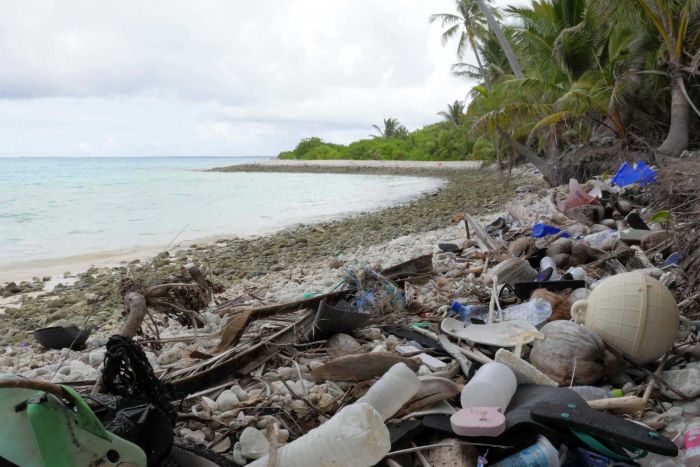
Look what the tide has brought in - Supplied: Jennifer Lavers
J. L. Lavers, L. Dicks, M. R. Dicks, A. Finger. Significant plastic accumulation on the Cocos (Keeling) Islands, Australia. Scientific Reports, 2019; 9 (1) DOI: 10.1038/s41598-019-43375-4
Urgent Call To Fill Big Gaps In Knowledge About Black-Throated Finch
May 17, 2019: James Cook University
A James Cook University-led review of the status of the Black-throated Finch has called for land-clearing to be slowed or halted to protect the endangered bird.
The finch is at the centre of controversy surrounding environmental consents for the proposed Adani coal mine in the Galilee Basin in central Queensland.
JCU PhD student Juan Mula-Laguna led the study. He said the southern subspecies has lost 80 percent of its historical range, is listed as extinct in NSW and is now primarily restricted to two main areas - around Townsville and central Queensland.
“We gathered everything known about the finch so we could outline necessary research to improve its conservation. But the study particularly highlighted the lack of ecological knowledge while the finch faces pressing threats,” said Mr Mula-Laguna.
He said the paucity of information created uncertainty about best management practices for the finch.
“It’s a scarce and inconspicuous bird and it lives over an extensive area in rarely surveyed places, which poses a significant challenge for the collection of biological data,” he said.
Mr Mula-Laguna said what information there was suggested two remaining strongholds for the finch, with the main population in central Queensland. This area largely intersects the Adani Group’s proposed Carmichael coal mine and separate commercial operations by other resource companies.
“There are ongoing signs of decline in the number of remaining Black-throated Finches, but the lack of systematic monitoring limits our capacity to give a total estimate. Also, we know more than half of the total habitat suitable for the finch now falls within resource extraction or exploration tenures and more than 120,000 hectares have already been slated for clearing for agriculture.”
Mr Mula-Laguna said mining companies had proposed leaving some areas untouched as environmental offsets for the birds, but these measures fell short.
“The limited area of suitable Black-throated Finch habitat remaining, the poor condition of some of the selected offsets, and the lack of a specific cumulative impact assessment or a coordinated plan for development makes offsets unlikely to compensate for the losses caused by clearing,” he said.
Mr Mula-Laguna said the scientists recommended focusing on close monitoring of the remaining populations and investigating the finch’s ecology to improve management practices in pastoral land and ensure their survival.
“We need to understand better the needs of this bird to be able to manage it, but any research should be conducted while obvious threats are halted or minimised, the most prominent being habitat loss, whether that’s for mining or agriculture. Without these measures we may be losing something irreplaceable,” he said.
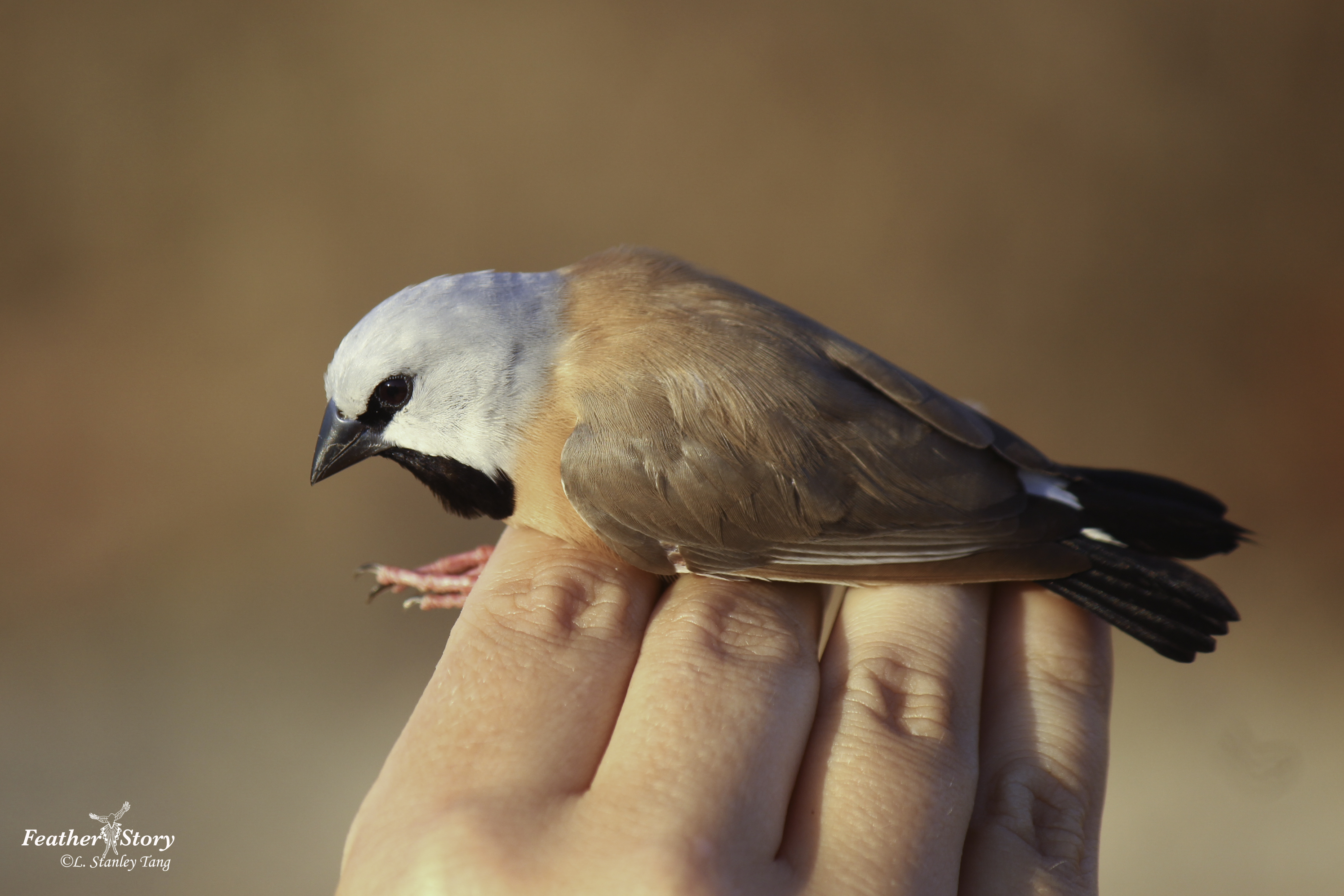
Juan Mula Laguna, April E. Reside, Alex Kutt, Anthony C. Grice, Peter Buosi, Eric P. Vanderduys, Martin Taylor & Lin Schwarzkop. Conserving the endangered Black-throated Finch southern subspecies: what do we need to know?. Emu - Austral Ornithology. Published online: 16 May 2019. Doi.org. 10.1080/01584197.2019.1605830
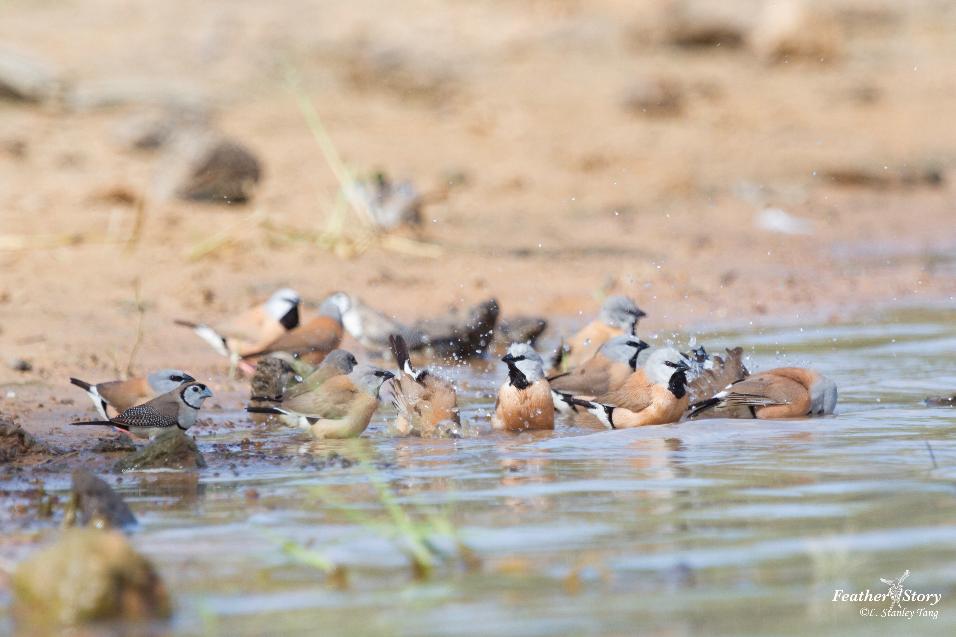
Protesters Flock To Toondah
by BirdLife Australia
Huge crowd assembles to protest proposed development
When developers see a stretch of mudflats, their minds automatically turn to ways to develop them. Fortunately, increasing numbers of people are rejecting this mindset, and this was never more apparent than on the muddy shores of Moreton Bay last Saturday, May 11th, coinciding with World Migratory Bird Day.
Over 500 people of all ages and from all walks of life assembled at G.J. Walter Park in Cleveland to express their dismay and anger about the proposed development of Toondah Harbour at the ‘Draw a Line in the Mud’ rally, organised by BirdLife Southern Queensland.
The protesters linked arms to form a human chain, demanding a commitment from their Federal candidates to take action against the unacceptable threat the development poses to the Critically Endangered Eastern Curlew and other threatened shorebirds which rely on the mudflats at Toondah for their survival.
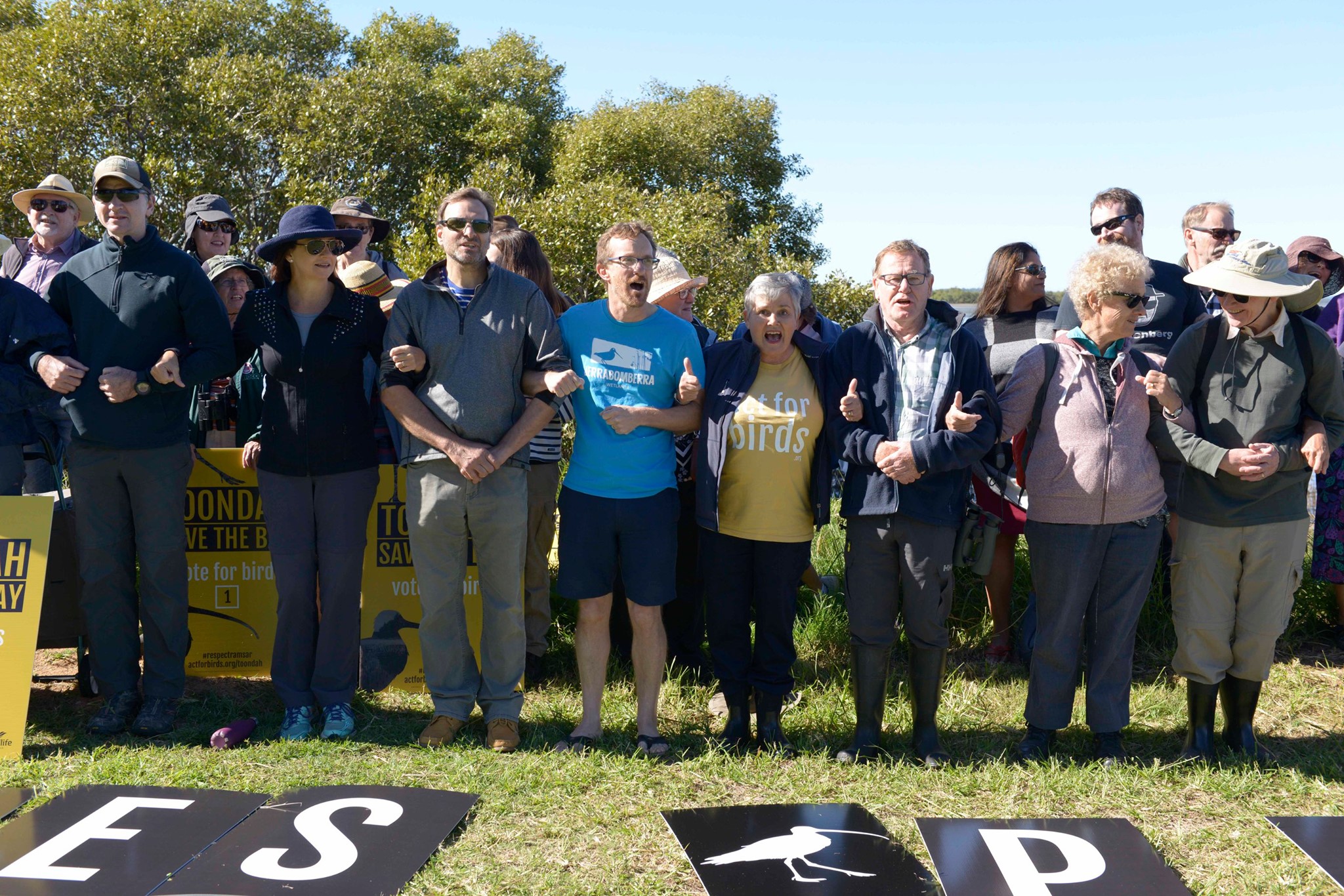
Toondah Harbour isn’t just any patch of mud — it’s part of an internationally recognised Ramsar wetland of international importance. That it is an important feeding site for the Critically Endangered Eastern Curlew, as well as other migratory shorebirds, is among the reasons for its Ramsar status. The population of Eastern Curlews has plummeted by around 80 per cent in the past 30 years, mainly because the wetlands they rely on to survive are, one by one, being lost to developments just like the one proposed for Toondah by the Walker Group. It’s been likened to ‘death by a thousand cuts’.
BirdLife Southern Queensland has worked tirelessly in recent years to stop this development but has been regularly thwarted by different levels of government in protecting this special place.
“It is an immense failure of state and federal leadership to allow damaging commercial interests to be put ahead of our unique and precious endangered species,” said Judith Hoyle, a local resident and bird lover who is the Convenor of BirdLife Southern Queensland. "All levels of government are stonewalling."
“Our leaders must know they cannot let this unpopular and destructive development go ahead,” she said.
“The Walker Group wants to sacrifice over 42 hectares of feeding and roosting habitat that is important to ensuring the Eastern Curlew’s survival.” (The Walker Corporation wants to dredge the site and construct 3, 600, three thousand six hundred residential units).
“The mudflats that the curlews rely on for their survival must not be destroyed.”
“This development and the destruction of our wetlands will push our Eastern Curlews further towards extinction.”
"If we can't get this protected, our nature laws are broken," Ms Hoyle said.
the problem
Moreton Bay in Queensland is acknowledged as one of the world’s most important sites for the Eastern Curlew and has been recognised as a Ramsar site under an international agreement that protects wetlands.
National legislation and international agreements protect Ramsar sites from negative environmental impacts, particularly against destructive developments within their boundaries. So, when a development was proposed within Toondah Harbour, which would have destroyed a substantial area of Eastern Curlew feeding habitat, it was expected that the Federal Minister would declare the proposal as clearly unacceptable under federal law and reject it outright.
However, a decision on this seemingly straightforward case was delayed an unprecedented number of times before eventually being allowed to progress to the next stage in the assessment process.
The decision even went against the expert advice of the Department of Environment that concluded the development proposal would likely have significant impacts on the ecological character of the Ramsar site and these impacts would be difficult to mitigate and offset.
Despite significant domestic and international pressure, our national laws have failed to offer swift protection for Eastern Curlews at this important site. A final decision on this proposal has not yet been made, but the fact that a proposed development within a Ramsar site was not rejected from the outset calls into question the Government’s commitment to upholding its obligations under both domestic legislation and international agreements. If the proposal is allowed to go ahead it sets a dangerous precedent for future developments within Australia’s other 65 Ramsar listed wetlands and indeed Ramsar Wetlands around the world.
The fact that a Minister can ignore the expert scientific advice of their own Department highlights the need for stronger national environmental laws and independent institutions to ensure those laws are applied without political influence.
the solution
The proposed new independent National Environmental Protection Agency would be responsible for conducting transparent environmental assessments and would ensure that Australia meets its obligations to conserve important habitat protected under international agreements.
The independent National Sustainability Commission would ensure that Australia has a robust system of biodiversity monitoring, improving our understanding of migratory species’ use of key habitats and ensuring these are not subject to cumulative impacts from multiple projects across the species’ range.
Strengthened environmental legislation must ensure the Federal Government assumes responsibility and leadership for reversing the decline in Australia’s environment. It must prevent the extinction of native species; and protect and recover key biodiversity areas, threatened ecological communities and threatened species including strict protection for their critical habitats.
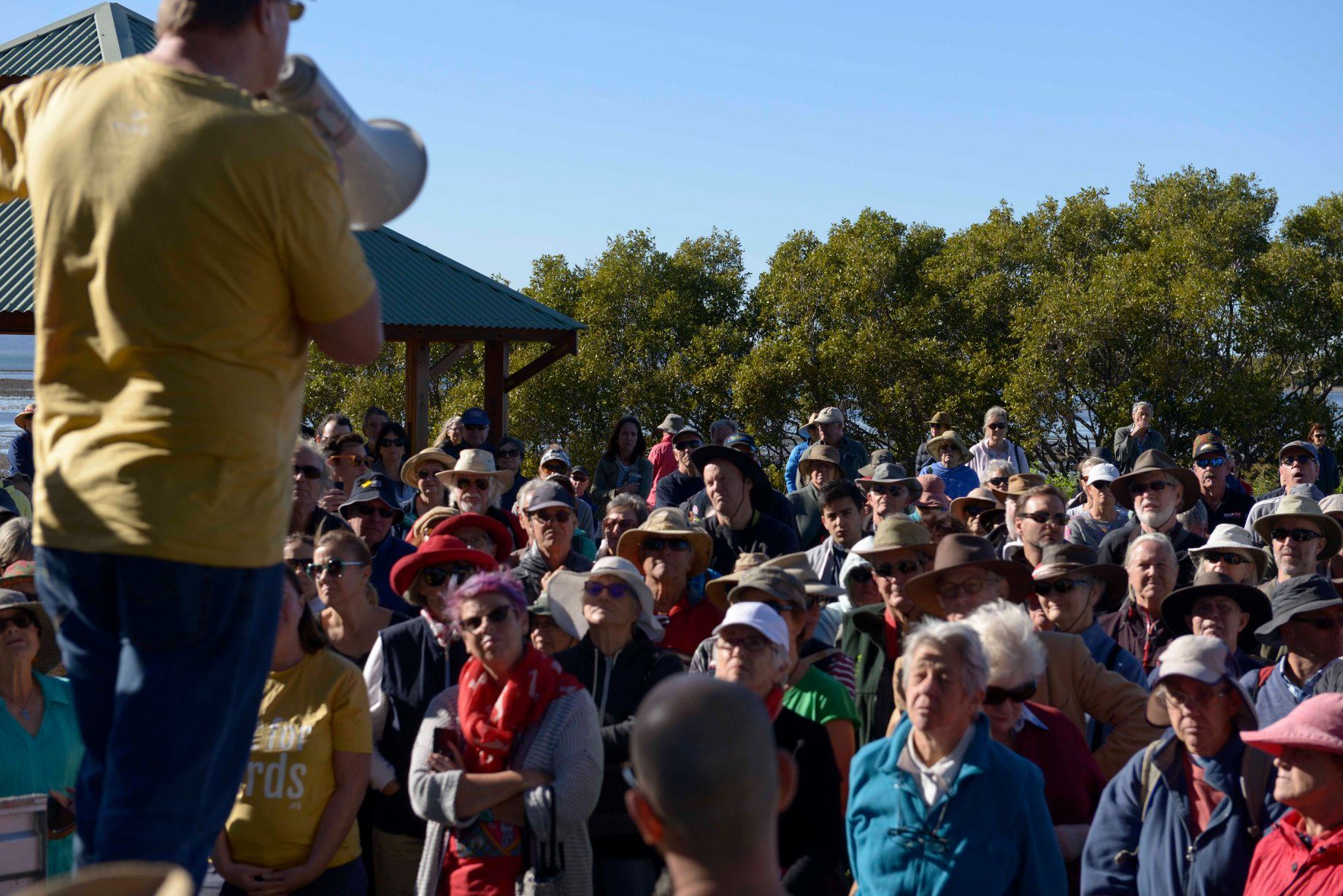
Images: Fiona Blandford
Two Birds, A Small Frog And Two Rare Orchids Now Listed As Critically Endangered In ACT
May 14, 2019: Mick Gentleman, MLA, ACT Government Environment Minister
Northern Corroboree Frogs, Swift Parrots, Regent Honeyeaters and two species of rare orchids are now listed as ‘critically endangered’ in the ACT to align with national listings.
Seventeen other nationally threatened species have also been added to the ACT Threatened Native Species List across various categories.
I have changed the status of these species to reflect their status in the Commonwealth’s Environment Protection and Biodiversity Conservation Act.
This will lead to stronger national collaboration for protection of biodiversity. We will continue to work with other jurisdictions on monitoring, research and action for recovery of threatened species.
Initiatives are in place to maintain the long-term survival of a number of these species, such as the successful Northern Corroboree Frog breeding program at Tidbinbilla.
Since 2011, the breeding program has helped release hundreds of captive-bred Northern Corroboree Frogs back into the fragile high country wetland ecosystems that contain sphagnum moss.
The ACT Government’s Woodlands Strategy is helping to restore and maintain the habitat for both the Swift Parrot and the Regent Honeyeater.
The Canberra Spider Orchid and the Brindabella Midge Orchid are endemic to the ACT and are found in very small areas. Long-term action plans are in place to preserve the remaining populations in our nature reserves and in the Brindabella Ranges.
For a full list of amendments made to the Threatened Species List, please visit the EPSDD website
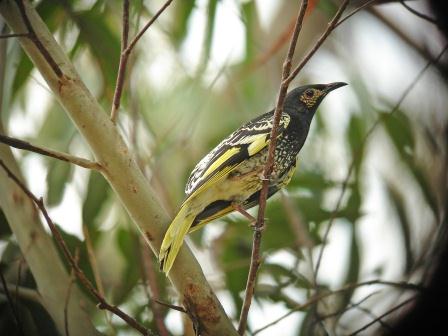
The Regent Honeyeater - critically endangered
Free Worm Farms And Compost Bins Available For Northern Beaches Residents
May 15th, 2019: NBC
Northern Beaches residents can register for a free worm farm or compost bin from Wednesday 15 May under a new Council initiative to support residents to get on board the war on waste.
“We all have a duty to reduce our footprint and compost bins and worm farms are a great way to avoid sending food scraps and garden waste to landfill,” Mayor Michael Regan said.
“According to the EPA, more than a third of the contents of an average red lid garbage bin in NSW is wasted food - around $3,800 worth for every household.
“We can all shop better and reduce what we throw out but of course, there will always be some food waste that we can’t avoid.
“A worm farm on your verandah or a compost bin in your backyard is a relatively easy way to help the environment plus it produces environmentally friendly, natural fertiliser that your garden and pot plants will love.
“And kids love a worm farm – and they can learn about how to help to better our environment literally in their own backyard, how good is that.
”With our new waste service coming on line in July and a concerted effort by our community to get on board the war on waste, this is a great time to introduce this initiative.”
Choosing between a compost bin or worm farm often depends on the type of garden you have. The ideal location for a compost bin is somewhere with sun and good drainage. In contrast, a worm farm thrives in good shade and is suitable for courtyards, balconies and small gardens.
Residents can register online to receive a voucher, which can be used to redeem a free compost bin or warm farm from a convenient pick up location in Manly (52 Raglan St) or Mona Vale (1 Park St) during business hours.
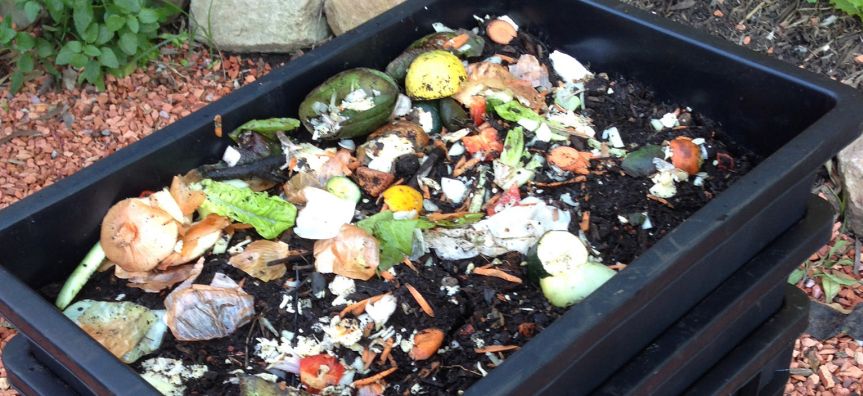
Have Your Say On: Pittwater Development Control Plan 2014 - Amendments (Environment Controls)
At a meeting on 16 April 2019, Council considered amendments to Pittwater Development Control Plan 2014 (DCP) in relation to Water Quality Management and Stormwater Detention Controls.
The purpose of the amendments are to improve and standardise requirements for:
- water quality management
- on-site stormwater detention systems
- estuarine and coastal risk management
Background
A comprehensive review of water management controls in existing Local Environment Plans (LEP) and Development Control Plans (DCP) will be undertaken in conjunction with the development of the Northern Beaches LEP and DCP, due to be completed in 2021.
In the interim, our Natural Environment and Climate Change team has identified the need to prioritise certain amendments to the Pittwater DCP.
In summary, the proposed amendments include -
- consolidating requirements for different development types.
- aligning stormwater quality requirements with Council’s adopted Water Management Policy.
- new water quality treatment requirements for land located in “coastal environment areas” identified under State Environmental Planning Policy (Coastal Management) 2018.
- removal of requirements for sediment control pits for dwelling houses (given their failure to be maintained).
- removal of on-site detention requirements in defined Flood Risk Precincts.
- updating a range of terms and references to reflect recent changes to legislation.
Make a submission
in writing - marked 'Pittwater DCP amendments' to Northern Beaches Council PO Box 82 Manly NSW 1655
Submissions close Sunday 2 June
Classification Of Land - 13 Warriewood Road Warriewood
Council obtained title to the subject land at 13 Warriewood Road Warriewood (Lot 13 DP1206507) on 20 March 2019 and intends to classify the land as “Community Land”.
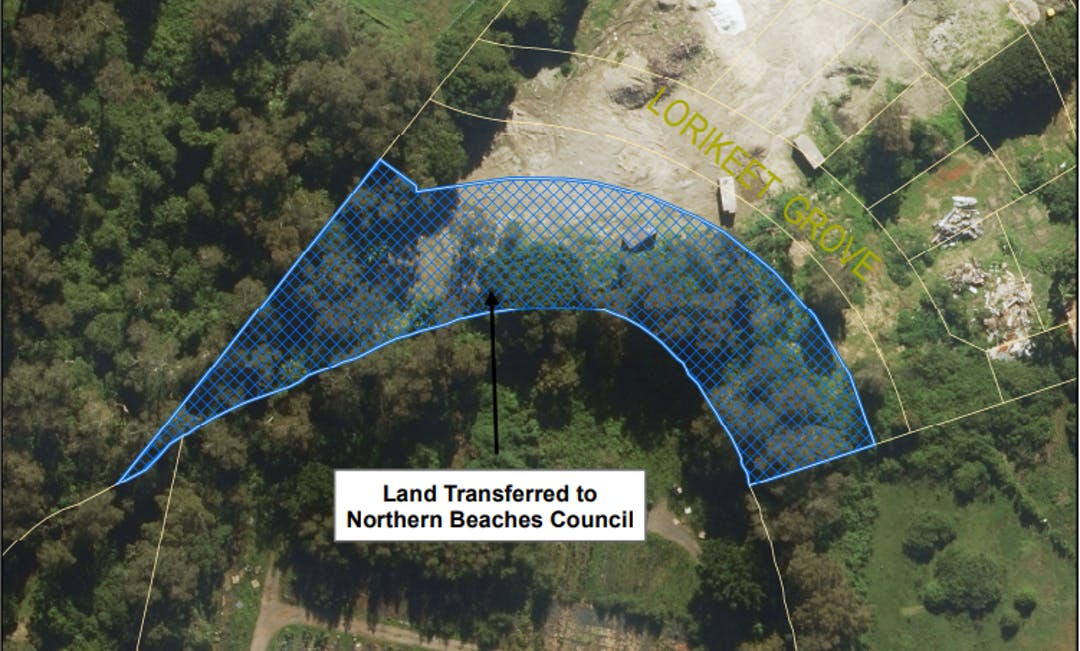
Make a submission
Enquiries: Council’s Property / Finance Officer - Property Ph. 1300 434 434
Submissions close Monday, 20 May 2019
Classification Of Land - 18 MacPherson Street, Warriewood
Council obtained title to the subject land on 16 April 2019.
Council hereby gives Public Notice of its intention to classify the subject Council land as “Community Land”.
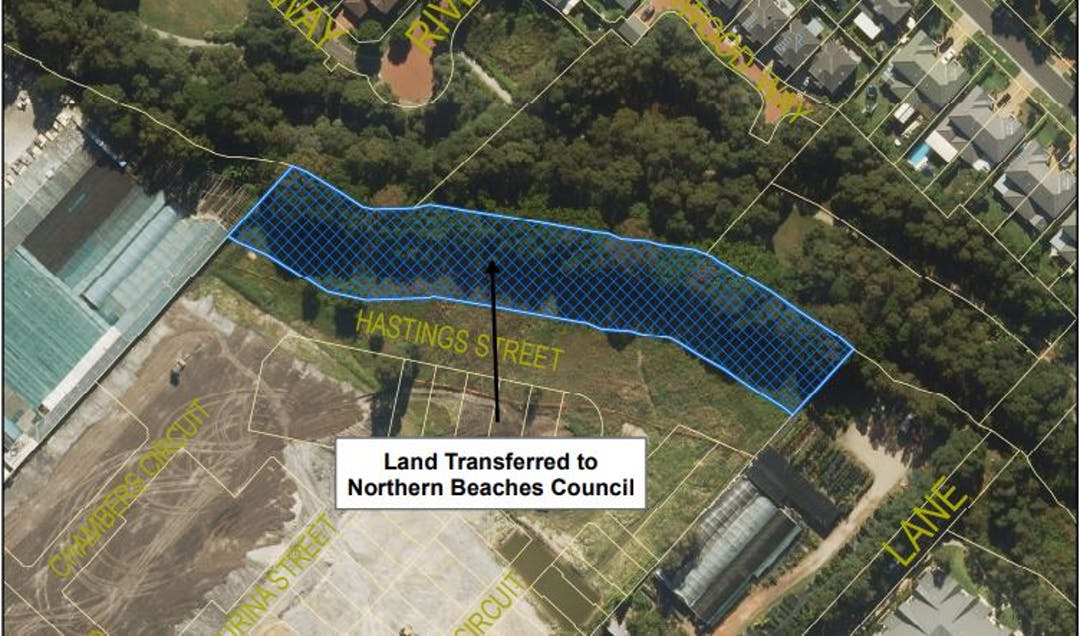
Make a submission
Enquiries: Council’s Property Finance Officer: 1300 434 434
Submissions close: Monday, 17 June 2019
Grevillea Caleyi Bushcare May 2019
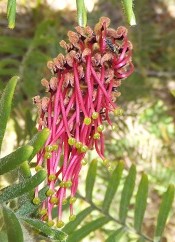 Next volunteer bushcare day will be on Monday the 27th of May, 2019.
Next volunteer bushcare day will be on Monday the 27th of May, 2019.Meet at the picnic shelter at 8.30 am
New volunteers welcome - training will be provided
Wear long trousers, a long sleeved shirt and boots or closed in shoes
The session will be cancelled in the event of rain. For more information contact David Palmer on 0404 171 940.
Please join our Bush regeneration morning at the Baha'i Temple, 173 Mona Vale Road Ingleside.
Based on our past success PNHA has been given a new round of funding to continue work on conserving the threatened Grevillea caleyi - so we look forward to your support.
Morning Tea provided.
Pittwater Natural Heritage Association
Organics Collections Grants Now Open
Applications are now open for Round 7 of the Organics Collections grants.
Aims
This eight-year, $27 million program funds new or improved local council household kerbside collection services for food and garden organics, including collection systems for garden only, food waste, or a combination of both.
How to apply
Grants of up to $1.3 million are available for bins, kitchen caddies and education for councils (or groups of councils) to introduce new food and garden waste collection services. Funding is also available for trials and system roll outs for source separated organics collections in multi-unit dwellings.
Businesses and councils with projects that involve collection of food waste from businesses are also eligible for funding, with up to $500,000 available for 50% of the cost of collection vehicles, bins and expert advice.
A webinar detailing how to apply for will be held on Wednesday 15 May 2019 at 2.30 pm. Register for the webinar.
Applications close at 3pm on 27 June 2019.
More information, the application form and guidelines are available from the NSW Environmental Trust.
How Plants Are Working Hard For The Planet
May 16, 2019: James Cook University
As the planet warms, plants are working to slow the effect of human-caused climate change -- and research published today in Trends in Plant Science has assessed how plants are responding to increasing carbon dioxide (CO2).
"We know that terrestrial plants are currently absorbing more CO2 than is released into the atmosphere through the combination of fire, decomposition, plant respiration, and human-related emissions," lead researcher Lucas Cernusak said.
"This is commonly known as the land carbon sink, and we know it's currently slowing the rate at which atmospheric CO2 is increasing. What we don't know is how strong that response is, and how long we can count on it."
Associate Professor Cernusak, a terrestrial ecologist at James Cook University in Cairns, Australia, worked with colleagues from CSIRO Oceans and Atmosphere in Canberra and the Université de Lorraine in France to measure the strength of the terrestrial biosphere's response to increasing CO2.
They focussed on photosynthesis -- the process in which plants capture energy from the sun and use it to synthesize carbohydrates from CO2 and water -- and examined terrestrial gross primary productivity (GPP), a measure of global photosynthesis.
Their modelling and analysis revealed that, since the beginning of the industrial era, photosynthesis has increased in nearly constant proportion to the rise in atmospheric CO2.
"We expected the two would corelate, since CO2 stimulates photosynthesis, but given the complexity of plant and environmental interactions we were impressed by how closely they have kept pace," Associate Professor Cernusak said.
"We can say that plants are working hard -- the response is at the highest end of the expected range."
The researchers used a combination of existing analyses and new modelling, alongside laboratory studies, to examine how increased CO2 affects photosynthesis, from individual leaves up to a global scale.
"This is an important step forward in the long and complex task of gauging how terrestrial vegetation will respond to climate change in the longer term," Associate Professor Cernusak said.
While increased CO2 has allowed an increase in photosynthesis and global leaf area, the researchers warn that further climate change -- with increasing frequency of events such as heat waves, droughts and storms -- has the potential to significantly stress terrestrial vegetation and decrease production.
"It's also important to remember that global change will manifest differently in different regions," Professor Cernusak said.
"Our observations and modeling analyses suggest that in high latitude ecosystems it's global warming that is driving the increase in leaf area and growing-season length.
"That's quite different from the tropics, where our study indicates that CO2 fertilization is driving the growth in photosynthesis, while climbing temperatures can create significant stress for some plant species."
Lucas A. Cernusak, Vanessa Haverd, Oliver Brendel, Didier Le Thiec, Jean-Marc Guehl, Matthias Cuntz. Robust Response of Terrestrial Plants to Rising CO2. Trends in Plant Science, 2019; DOI: 10.1016/j.tplants.2019.04.003
Archie's Pittwater Clean Up
My name is Archie Mandin
I am a Seabin Ambassador, I started this campaign because I want to take a stand against ocean plastics!
My goal is to raise enough money to bring a minimum of 20 Seabins to Pittwater NSW as I want to give The Northern Beaches the opportunity to reduce its plastic pollution impact on the ocean. Its amazing how much accidental rubbish comes down our creeks and into our waterways
I need your help to raise money to buy the Seabins a revolutionary ocean cleaning technology which is essentially a floating rubbish bin that operates 24/7 catching all floating debris in the water.
The Seabin helps clean the ocean of floating debris which in turn creates cleaner oceans and we all benefit from this in one way or another. I mean, who really wants to swim in pollution? Not me that’s for sure!
Did you know that 300 million tons of plastic are produced in the world every year, half of which is for single use products, from this more than 8 million tons of plastic is dumped into our oceans every year. We need to do something about it and now with the purchase of a Seabin we can all participate and make a difference!
Join me and my campaign to help ensure cleaner oceans!
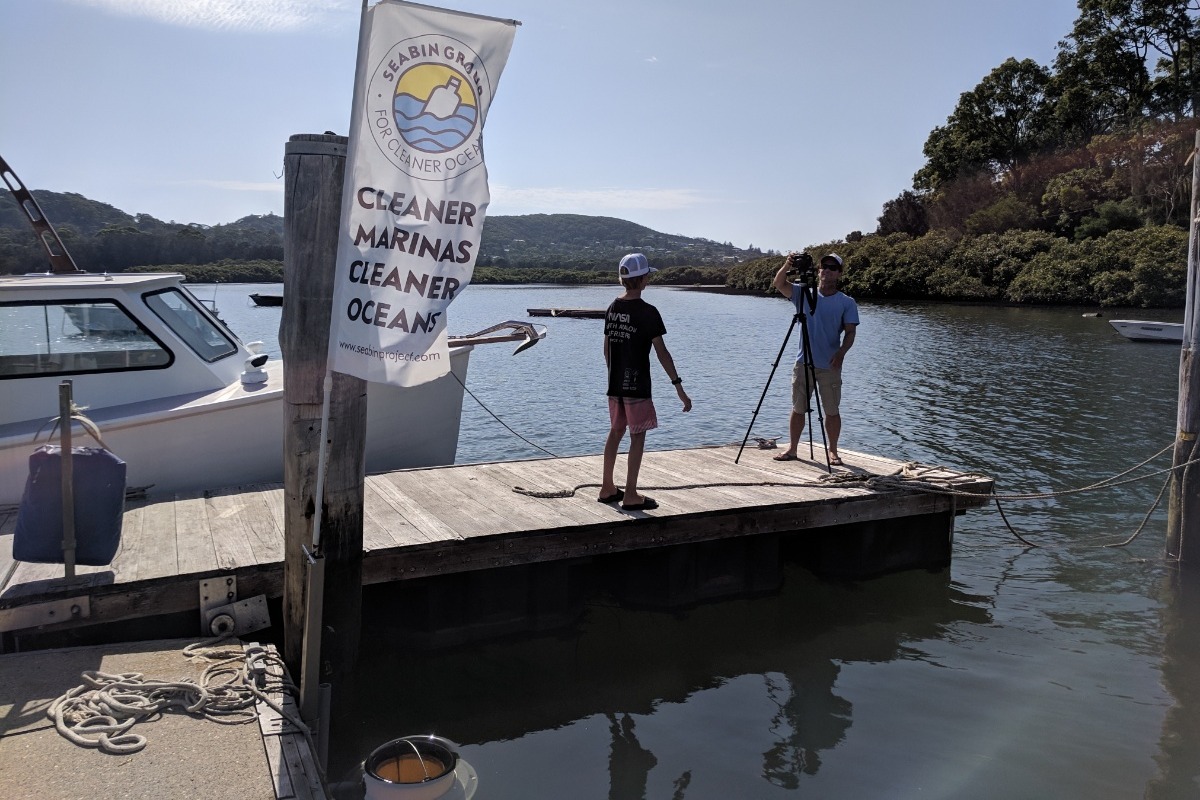
What’s a Seabin?
The Seabin is a floating rubbish bin that is located in the water at marinas, docks, yacht clubs and commercial ports.
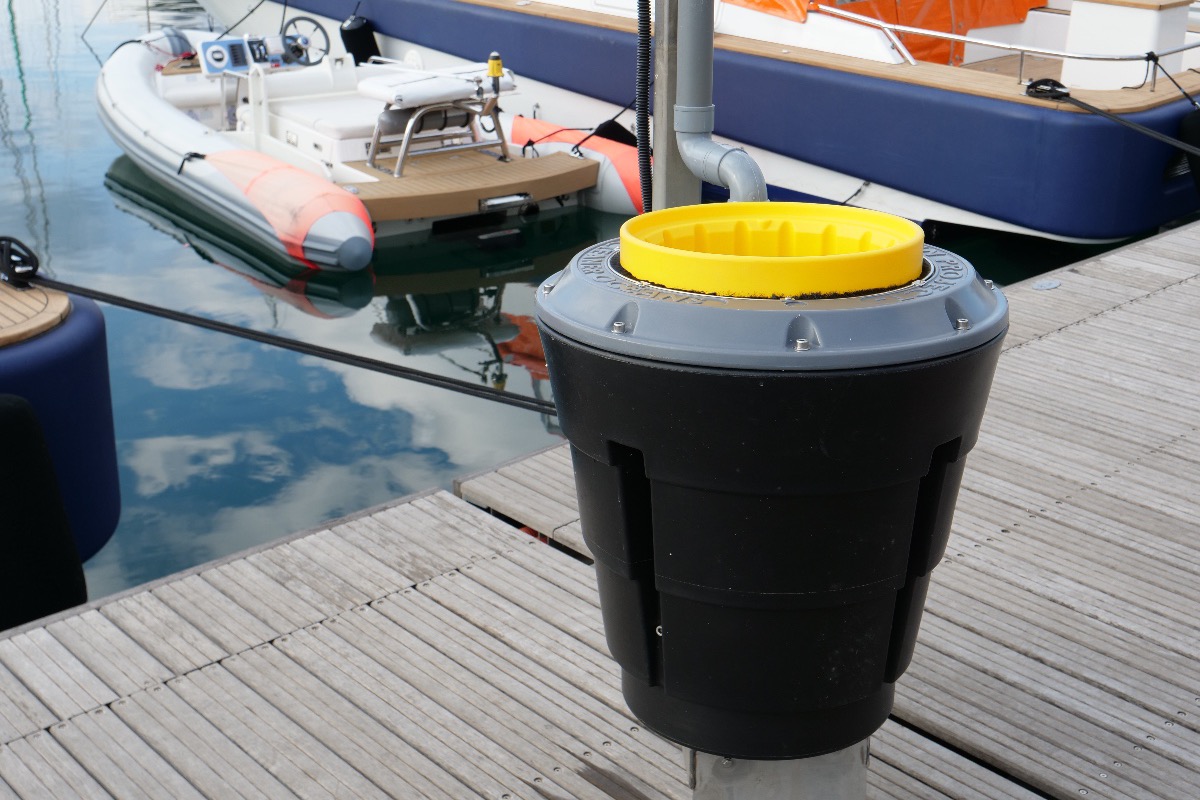
The Seabin can catch an average of 3.9kgs of floating debris per day which adds up to 1.4 tons per year. (depending on weather conditions and debris volumes) The Seabins is catching large plastic bags, bottles, plastic straws, coffee cups, food wrappers, surface oils and micro plastics down to 2 mm small.
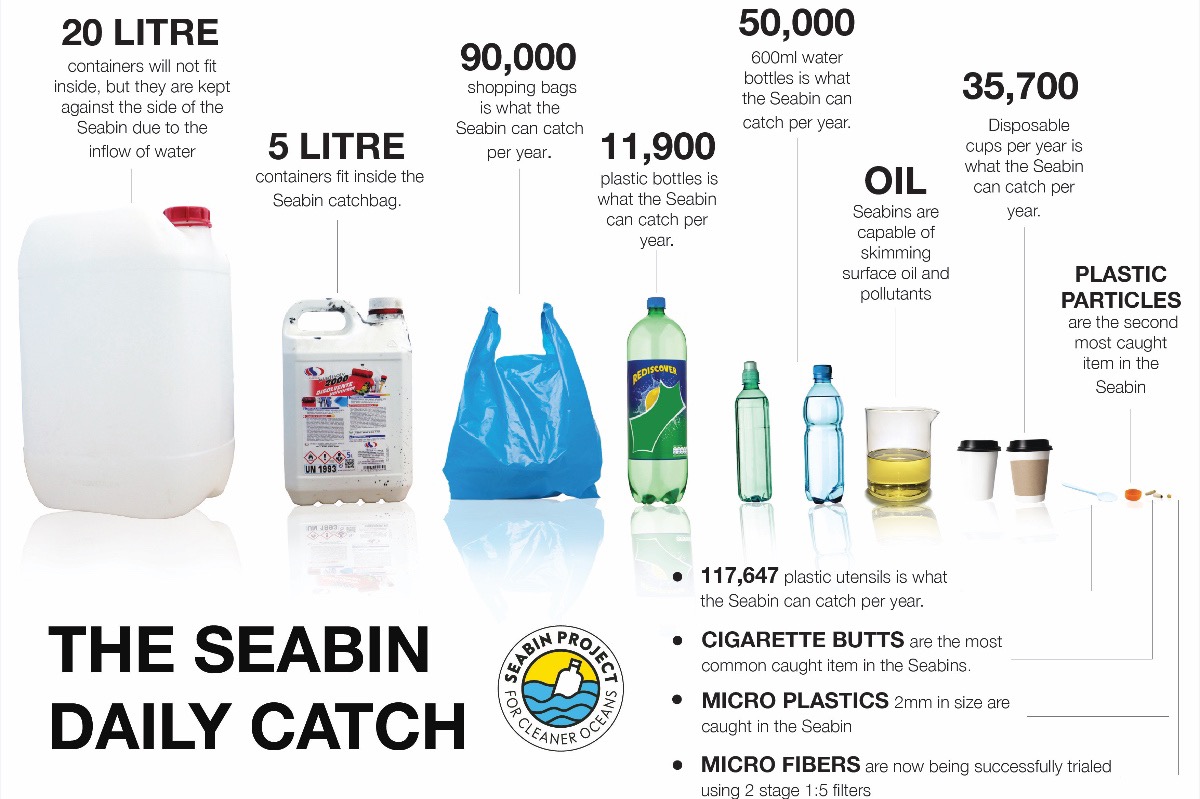
How can a Seabin contribute to cleaner oceans?
The Seabin contributes to cleaner oceans by removing 1.4 tons of floating debris per unit per year. The location of the Seabin in marinas is ideal and where it matters most, close to the source of entry for floating debris. Ports and Marinas are perfect locations to stop floating debris from entering the open ocean and ocean plastics are also brought in by wind and currents.
Are the Seabins a danger to marine life?
The fish According to the team at Seabin, stay away from the surface of the water where the Seabin sucks in the water. They are deterred by the force of the water current. If there are swarms of jellyfish or bait fish it is recommended that the Seabins are turned off until the swarms pass. If a fish was to accidentally go into the Seabin, it would be caught in the Seabin and stay submerged in water until the marina staff retrieve the filter and throw the fish still alive back into the water.
How does it work?
Water is sucked in from the surface and passes through a catch bag inside the Seabin, with a submersible water pump capable of displacing 25.000 LPH (liters per hour). The water is then pumped back into the marina leaving litter and debris trapped in the catch bag to be disposed of properly.
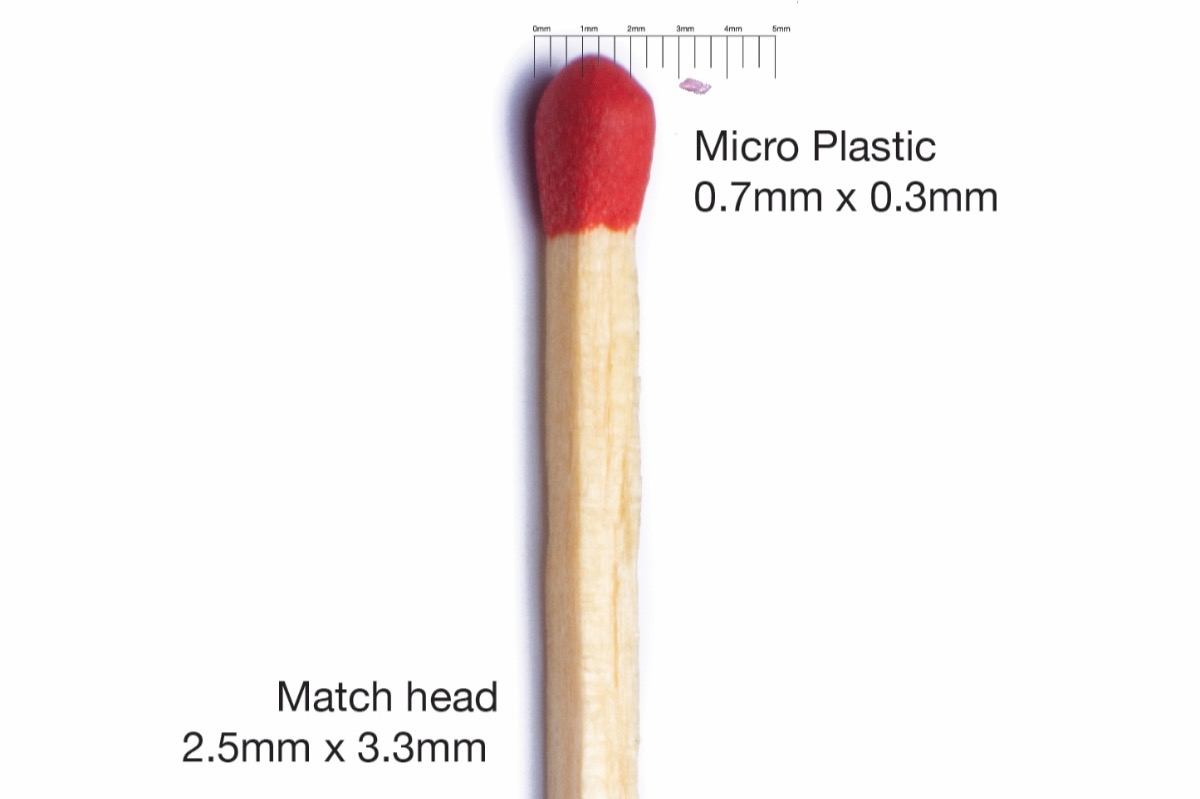
Who is responsible for the Seabin?
This is the best part of it all, the marina will be the one responsible for the upkeep of the Seabins and also they will be paying for the energy consumption of the Seabin which is around $2 - $3 a day.
The marina enjoys a cleaner marina and the rest of us and the marine life enjoy cleaner oceans with less floating debris polluting our oceans!
Seabins part of a whole solution
Seabins whole solution is Technology, Education, Science, Research and Community. The reason for this is that Technology alone is not the solution to stopping ocean plastics, education is the real solution.

Great! Can our local community be involved also?
Yes! The team at Seabin have interactive programs and lessons designed for schools, community and youth to interact with the Seabins and have over 2000 school students engaged around the world, this is something that we can do locally also with support from the team at Seabin Project.
What will we be doing if we participate in these programs?
You would be joining an international community contributing important data and feedback on ocean plastics to the Seabin central data base. Renowned scientists, universities and environmental agencies are all a part of the programs also.
The lessons range from identifying ocean plastics to data collection of what the Seabins are catching weekly. The data collection is a very easy activity and where we can all see the measurable impact of debris the Seabins are taking out of the water in all weather conditions.
It’s as simple as counting how many plastic bags, plastic particles, food wrappers and then noting it down on a spreadsheet or app. Weather conditions and location information is also entered into the data base.
How can you help our campaign and make a difference in the world?
Every contribution to this crowdfunding campaign helps, be it $1 or $50 dollars, it all adds up and bring us closer to our goal.
Even if you cannot afford a donation, please help by sharing this campaign with your friends and family on social media. The more people that know about the campaign the better!
Thanks everyone for taking the time to check out our campaign!
FOR CLEANER OCEANS!
Archie
FAQS SHEET
Seabin Project FAQs
Q: Can someone pay out the crowdfunding campaign goal?
A: Yes! We need help! The more money we can raise, the more Seabins we can buy.
Q: Why crowdfund a Seabin?
A: Until now, the Seabins were not for the everyday person to purchase because marinas ports and yacht clubs are the target market for Seabin Group. This is a way where everyday people can give something back to the oceans.
Q: How do Seabins work in tidal areas?
A: Seabins at present are designed for floating docks and pontoons. The Seabins move up and down with the tide on the floating dock.
Q. How are the pumps run?
A. The pumps are currently electric, and around $2-$3 a day to run.
Q: When are the Seabins available?
A: Depending on your countries location, Seabins will be available Feb 2019.
Q: Do any fish get sucked into the Seabins? What about smaller marine life?
A: There is a possibility of fish to enter the Seabins, however in the last 2 years of development, the Seabins have only caught a handful of small bait fish. Most of which have been thrown back into the water alive. The fish simply stay away from the flow of water entering the Seabin and with the current fine tuning of the Seabin, the risk is now minimal.
Q: I don’t have any money to donate, how can I help?
A: Don’t worry! Your amazing anyways and thanks for even contacting us. We need help to share this project around with any media we can. Social media platforms like Facebook, Instagram, Twitter, websites, bloggers. Also with newspapers, magazines, tv, radio and journalists. Also friends and family!
Curious Kids: Can Snails Fart?
May 13, 2019
Answered by Bill Bateman, Associate professor, Curtin University
Curious Kids is a series for children. If you have a question you’d like an expert to answer, send it to curiouskids@theconversation.edu.au You might also like the podcast Imagine This, a co-production between ABC KIDS listen and The Conversation, based on Curious Kids.
Can snails fart? Thank you. – Avalon, age 9, Scotts Head, NSW.
Lots of animals fart because of what they eat, but it was not easy for me to find a clear answer on whether snails really do. More research is needed to know exactly how the digestive system of a snail really works.
You might have heard about methane. It is a gas found in a lot of animal farts. I did find one study that said that scientists kept some snails in a glass container for one day and one night and checked if they would produce methane. And the snails did not.
(For the adults in the audience, the paper noted that, “In this aspect, the structure of the microbiota and in consequence the functioning of the digestive microbial ecosystem of the snails differs markedly from those of vertebrates, especially herbivores.”)
You may have seen reports that scientists built a database showing which animals do and don’t fart. Not every animal in the world is on there, but it does say that mussels and clams (which, like snails, are part of a group of animals called molluscs) do not fart. Moon snails, which live in the sea, were also listed as a no.
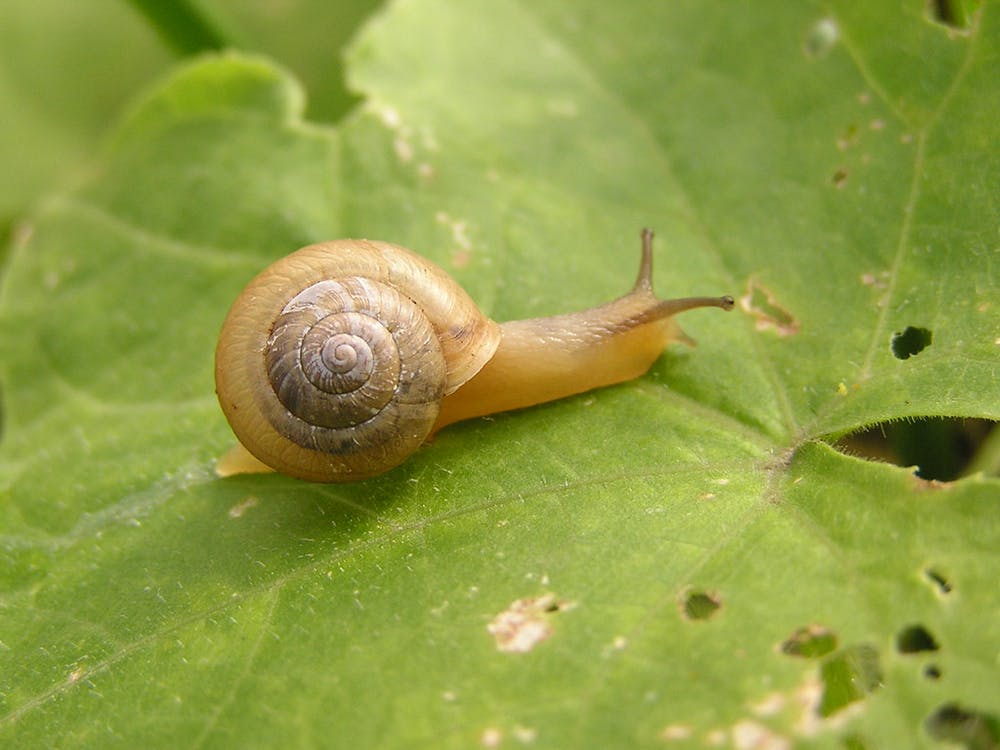
One thing we do know is that a snail’s bottom is right near its head. Flickr/Yamanaka Tamaki, CC BY
One thing I can tell you is that a snail’s bottom is right over its head. This is because snails are very different from other molluscs (which includes things like octopus and squid as well). Because they are squashed into a protective shell, their body is twisted round to fit in. As a result, their bottom is just above and to the side of where their head comes out.
Gassy molluscs
Water snails, mussels and other molluscs do produce a gas called nitrous oxide if they live in polluted water.
You might have heard of nitrous oxide. It’s also called “laughing gas”. But this can be a problem, as nitrous oxide is a greenhouse gas and lots of it will add to climate change.
These mussels, when they are not producing laughing gas, produce something called “pseudo-faeces” which literally means “false poo”. Because the food they eat (little plants and animals floating in the water which they suck in) can contain a lot of sand, they sometimes have to squirt it all out. This doesn’t come out of their bottom, but out of something called a siphon, through which they suck their food.
____________________________________________________
Hello, curious kids! Have you got a question you’d like an expert to answer? Ask an adult to send your question to curiouskids@theconversation.edu.au
Please tell us your name, age and which city you live in. We won’t be able to answer every question but we will do our best.
Striated Pardalotes In The Capertee Valley
Published on 17 May 2019 by BIBY TV
These birds are also seen in Pittwater - Ingleside, Warriewood - visit Tiny Tiny Birds Of Ingleside
These Striated Pardalotes (Pardalotus striatus) were filmed in March 2019 in the Capertee Valley, NSW. The footage shows at least three individuals visiting an artificial pond across one and a half hours on a single day. In the first scenes the camera is trained directly on the water, while other footage shows how the pardalotes survey the pond area from overhead branches before flying to ground level. Note the slight difference in white wing-stripe width. The second bird shown is almost certainly the subspecies ornatus, as might be the first one. Differences in head plumage suggest that the first bird could be younger (say, transitioning from juvenile to adult). But the third pardalote (at 2.33 mark) seems to have a wider stripe and is thus likely to be subspecies substriatus, although a hybrid between the two subspecies is another possibility.
These pretty little birds are Australia’s largest pardalote. Nonetheless, they are just as hard to glimpse in the tree canopy as their even tinier relative, the Spotted Pardalote. Both species can be found in the open forests, woodlands, revegetated areas and paddock trees of the Capertee Valley. Although they typically forage in the foliage of tree crowns, filming opportunities arise when they visit the understorey and ground for nesting and drinking. But generally, they are more often heard than seen. One of the Striated Pardalote calls is part of the soundtrack for the second and third photos. The Spotted Pardalote can also be heard more subtly. (The sound for Photo 1 was collected at the same time as the photo was taken, which was earlier than the filming session. The trees shown are only metres away from the pond.)
Australia Post Abuzz With Native Bee Stamps
May 14, 2019
Some of Australia’s native bees are set to appear on a striking commemorative stamp issue to be released by Australia Post this May.
Speaking on the stamp release, Australia Post Philatelic Manager Michael Zsolt said it was an opportunity to learn about the diversity of Australia’s native bees.
“We have a great diversity of native bees and they play an important role as pollinators of native flora. These beautiful stamps remind us of how integral the often solitary native bee is, and they’ll be of interest to nature lovers and collectors alike.”
The four domestic base-rate ($1) stamps feature artwork from renowned Australian wildlife illustrator Kevin Stead and include:
$1 Resin Bee (Megachile macleayi)
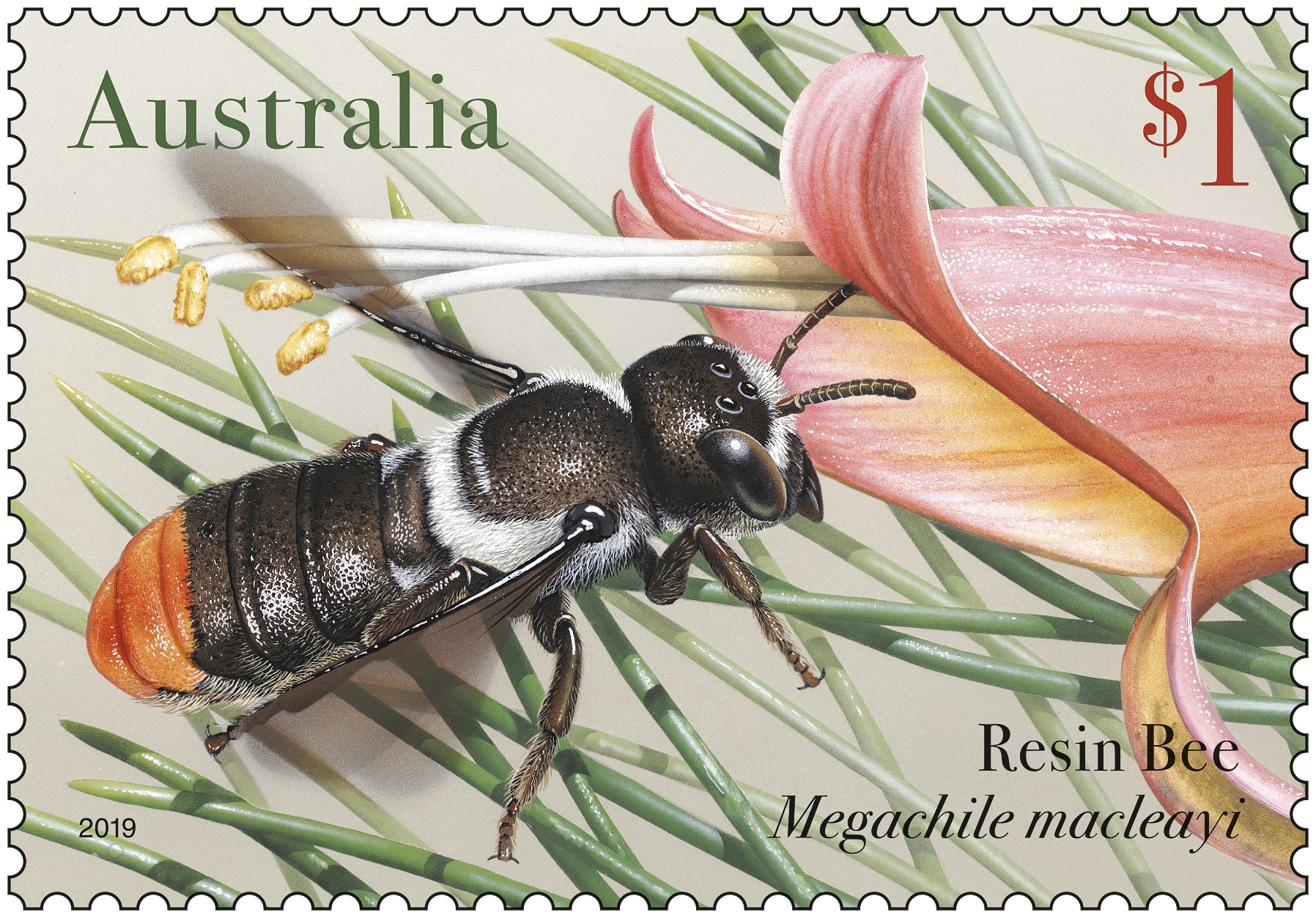
The Resin Bee, from the family Megachilidae, builds its nest in narrow holes in timber, constructing the nest and sealing the entrance with gums and resins it collects from leaves and plants. This solitary bee, which is found across northern Australia, prefers nectar from legume flowers.
$1 Green and Gold Nomia Bee (Lipotriches australica)
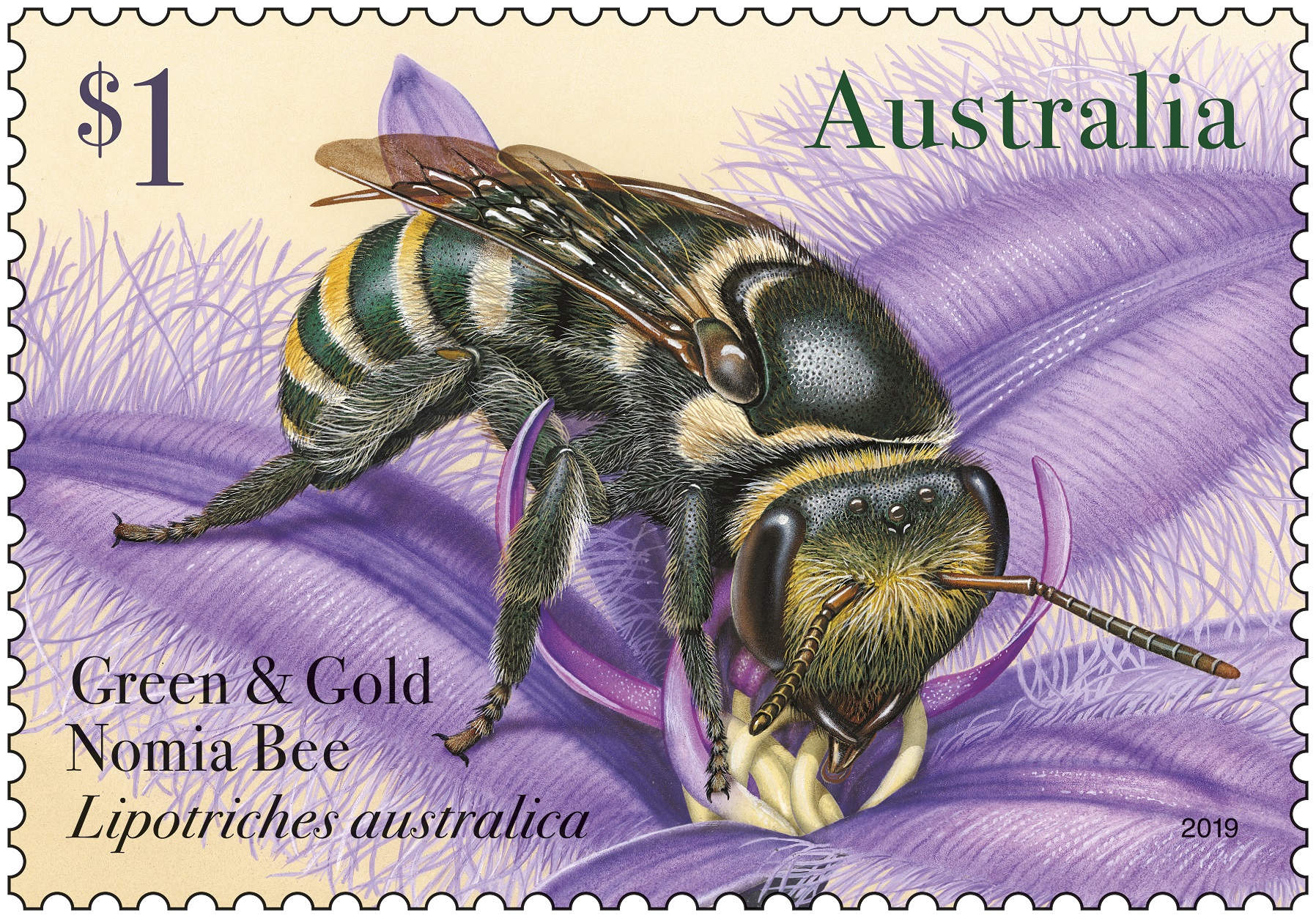
From the family Halictidae and found throughout eastern Australia, the solitary Green and Gold Nomia Bee nests in the ground. After looking for mates and foraging for nectar during the day, clusters of numerous male bees spend the night clinging or “roosting” together on tree twigs or grass stems.
$1 Wasp-mimic Bee (Hyleoides concinna)
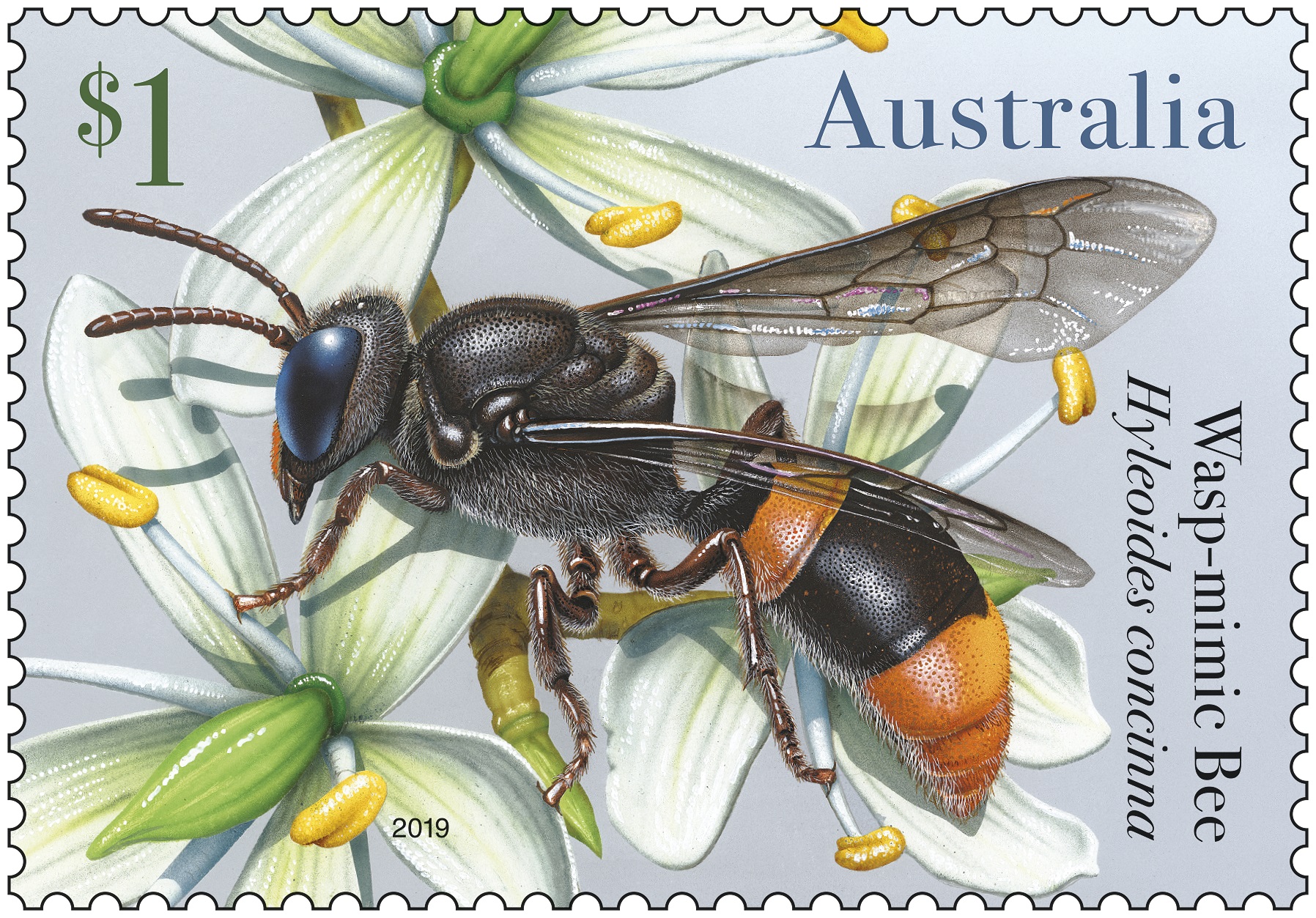
The solitary Wasp-mimic Bee from the family Colletidae can most frequently be seen feeding from eucalypt flowers in eastern Australia from southern Queensland to Tasmania. It convincingly disguises itself as a black and orange wasp in order to fool and deter predators.
$1 Neon Cuckoo Bee (Thyreus nitidulus)
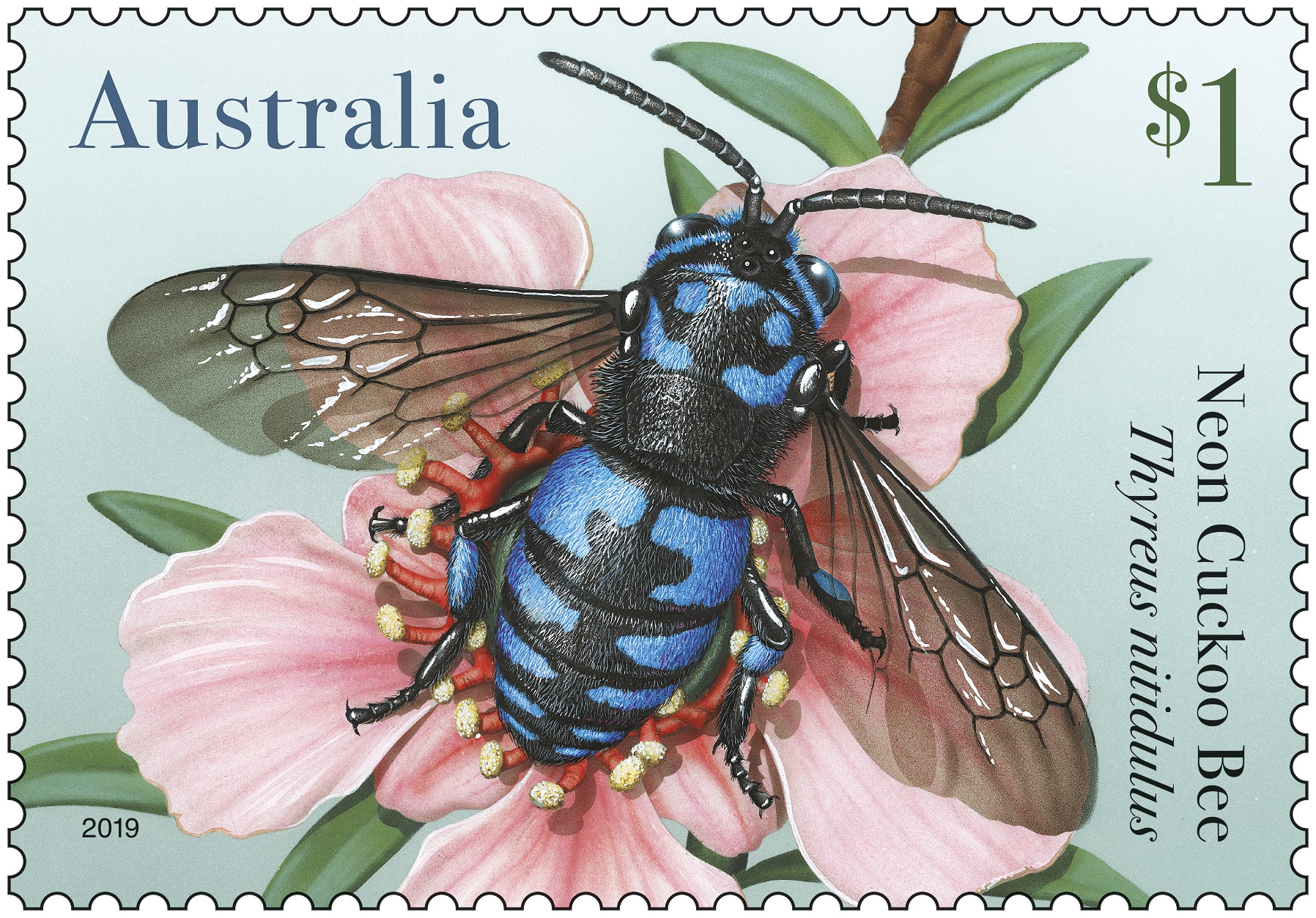
The striking, bright metallic blue Neon Cuckoo Bee from the family Apidae is so named because it opportunistically lays its eggs on the pollen balls inside the ground nests of the Blue-banded Bee (Amegilla cingulata). This solitary cleptoparasitic bee, which has no need to collect pollen from flowers, is found across eastern and northern Australia.
Products associated with this issue include first day cover; stamp pack, medallion cover, booklet collection and booklet of 10 x 4 $1 self-adhesive.
The stamp and associated products are available at participating Post Offices, via mail order on 1800 331 794, and online at auspost.com.au/stamps, from Tuesday 14 May 2019 while stocks last.
Retirement Village Rules Of Conduct
NSW Fair Trading is seeking feedback on changes to the Retirement Villages Regulation which introduces mandatory rules of conduct for operators of retirement villages.
The Rules of Conduct for Operators of Retirement Villages set a minimum standard of behaviour for retirement village operators.
The rules will provide the retirement village industry with a clear foundation of practices and processes for the effective functioning of a village.
The Rules of Conduct include:
- mandating higher standards of customer service to ensure residents and prospective residents are treated with respect, dignity and fairness
- promoting fair, honest, transparent and ethical practices for the marketing, promotion and transfer of residential premises in retirement villages
- creating a framework for retirement village operators for the avoidance, disclosure and management of conflicts of interest
- establishing minimum standards for the resolution of disputes and handling of complaints in a retirement village and appropriate escalation pathways for residents and the operator
- requiring minimum training and competency standards for retirement village operators and members of staff, including the effective oversight and supervision of members of staff.
The rules have been developed in consultation with key stakeholders and will be mandatory. Operators who don't comply with the rules will be penalised.
Have your say
There are three ways you can submit your feedback:
Online: consultation form
Email: policy@finance.nsw.gov.au
Mail: Retirement Village Rules of Conduct Review
Regulatory Policy, Better Regulation Division
Department of Finance, Services and Innovation
2-24 Rawson Place
Haymarket NSW 2000
Have your say by Friday, 7 June 2019.
More Information
Email: Regulatory Policy
Phone: 133220
Commitment To Fixing Aged Care Needed Now - National Seniors
May 14, 2019: National Seniors
National Seniors Australia is disappointed that neither of the two major political parties have committed extra funding to fix Australia’s aged care mess. There is a dire need to triple the number of high-level aged care packages for vulnerable older Australians.
While the Royal Commission into Aged Care Quality and Safety hasn’t yet released its findings, it has made it crystal clear what needs to be done in home care. It found home care needs a minimum of an extra $2 billion dollars a year.
Despite this, and with the election only days away, neither party has yet committed to additional funding. While we would expect either party will implement recommendations from the Royal Commission in 2020, National Seniors calls on all parties to begin the process of fixing the aged care system now.
National Seniors Chief Advocate Ian Henschke said “Older Australian’s can’t afford to wait for the Royal Commission’s recommendations.”
“It appears neither party is prepared to take any major action before the Royal Commission hands down its findings. This is deeply disappointing not just to the hundreds of thousands of Australians needing care, but also their families. We can and must do better as a nation.”
He said this election campaign would be remembered for the disgraceful lack of policies and commitment on aged care.
“The Royal Commission has uncovered appalling evidence of aged care failure and it is time for all parties to commit to action and explain to voters their plans and resourcing for fixing the system,” he said.
“As the Royal Commission heard, the problem and the fix are obvious – 16,000 people died last year waiting for home care packages, and almost 130,000 people are still on the waiting list.
“The fix is to invest the $2 billion to $2.5 billion dollars annually in more home care packages as estimated by the Health Department in its submission to the Royal Commission,” Mr Henschke said.
Mr Henschke said the description of the present system by the Royal Commission’s senior Counsel Assisting, Dr Tim McEvoy QC as “cruel unfair, disrespectful and discriminatory” was damning.
“On any measure”, Dr McEvoy QC commented, “delays of this magnitude to access the care and support that is actually needed is unacceptable and raises real safety risks. There are more people waiting for care and support from a home care package at their assessed level than there are people receiving a home care package”.
Mr Henschke said there were initiatives that could be committed to now, to begin the process of repairing the damaged system, and called once again for the tripling of level 3 and 4 home care packages.
Antibiotic Treatment Alleviates Alzheimer's Disease Symptoms In Male Mice
May 16, 2019: Rockefeller University Press
Researchers at The University of Chicago have demonstrated that the type of bacteria living in the gut can influence the development of Alzheimer's disease symptoms in mice. The study, which will be published May 16 in the Journal of Experimental Medicine, shows that, by altering the gut microbiome, long-term antibiotic treatment reduces inflammation and slows the growth of amyloid plaques in the brains of male mice, though the same treatment has no effect on female animals.
The community of bacteria that live in the gastrointestinal tract -- the gut microbiome -- is generally harmless, but, because they affect the activity of the body's immune system, these bacteria can influence a wide range of diseases, even in distant tissues such as the brain.
"Recent evidence suggests that intestinal bacteria could play a major role in various neurological conditions including autism spectrum disorders, multiple sclerosis, Parkinson's disease, and Alzheimer's disease," explains Professor Sangram S. Sisodia, director of the Center for Molecular Neurobiology at The University of Chicago.
Alzheimer's disease is characterised by the formation of amyloid plaques and the activation of immune cells present in the brain known as microglia. These cells can help remove amyloid plaques, but their activation may also exacerbate the disease by causing neuroinflammation.
Alzheimer's patients exhibit changes in their gut microbiome, and Sisodia and colleagues have previously reported that gut bacteria may influence the development of these symptoms in rodents. Long-term antibiotic treatment limited the formation of amyloid plaques and reduced microglia activation in male, but not female, mice expressing mutant proteins associated with familial Alzheimer's disease. "While compelling, our published studies on the role of the gut microbiome on amyloid plaque formation were limited to a single strain of mice," Sisodia says.
In the new study, Sisodia and colleagues therefore examined the effects of antibiotics on a different mouse model of Alzheimer's disease known as APPS1-21. Long-term treatment with a cocktail of antibiotics again reduced the formation of amyloid plaques in male mice but had no effect on females. Antibiotic treatment also appeared to alter the activation of microglia in male mice, changing them from a form that is thought to promote neurodegeneration to a form that helps to maintain a healthy brain.
To prove that these improvements in Alzheimer's symptoms were caused by alterations in the gut microbiome, the researchers transplanted fecal matter from untreated mice into antibiotic-treated animals. This procedure restored the gut microbiome and caused an increase in amyloid plaque formation and microglial activation.
But why do alterations in the gut microbiome only affect male mice? Sisodia and colleagues discovered that long-term antibiotic treatment changed the gut bacteria of male and female mice in different ways. The changes in the microbiome of female mice caused their immune systems to increase production of several proinflammatory factors that could influence the activation of microglia.
"Our study shows that antibiotic-mediated perturbations of the gut microbiome have selective, sex-specific influences on amyloid plaque formation and microglial activity in the brain," Sisodia says. "We now want to investigate whether these outcomes can be attributed to changes in any particular type of bacteria."
Hemraj B. Dodiya, Thomas Kuntz, Shabana M. Shaik, Caroline Baufeld, Jeffrey Leibowitz, Xulun Zhang, Neil Gottel, Xiaoqiong Zhang, Oleg Butovsky, Jack A. Gilbert, Sangram S. Sisodia. Sex-specific effects of microbiome perturbations on cerebral Aβ amyloidosis and microglia phenotypes. J. Exp. Med., 2019 DOI: 10.1084/jem.20182386
Australian First - ACT To Recognise Animal Sentience In Law
May 16, 2019
In an Australian first, the ACT Government has today introduced a bill to the Legislative Assembly that recognises animals as sentient beings, as well as introducing a broad range of reforms to strengthen animal welfare laws.
Minister for City Services Chris Steel said that the legislation will ensure that the ACT has best-practice, contemporary and effective animal welfare laws.
“The ACT community strongly values animals and they deserve to have a quality of life that reflects that intrinsic value,” said Minister Steel.
“The science tells us that animals are sentient, they feel emotion and pain, and we are seeking to recognise that in law.”
“People have duty to care for the mental and the physical welfare of the animals in their care, and this legislation will strengthen protections for the welfare of animals.”
Duty of care and cruelty offences
The new legislation introduces a range of new, specific offences for failing to take appropriate care of an animal. The offences range from failing to provide an animal with water or shelter through to abandoning an animal, as well as offences for hitting or kicking an animal. Penalties for cruelty and aggravated cruelty have also been toughened and ownership bans can be enforced and new powers are proposed to seize animals.
A new offence will be introduced in the Bill where a dog is confined for 24 hours without providing exercise.
“This does not apply to someone who keeps their dog in their yard, house or apartment and does not have the opportunity to walk them every day. It would, however, apply in situation where a dog is tied to a pole for days on end or is kept in a cage where it cannot move.”
The legislation will also make it an offence for a person to take part in animal fighting or other violent activities, like pig-dogging, where an animal is used to torture or kill another animal.
“One of the key features of the Bill is a proportionate and enforceable regulatory framework with stronger penalties and enforcement powers. Importantly, the Bill proposes an escalating enforcement framework that will allow our inspectors and the RSPCA to issue on-the-spot fines for more minor duty-of-care or cruelty offences in addition to the existing serious offences.”
Pet licencing
Pet businesses including pet shops and boarding kennels will be required to be licenced under the new laws, 6 months after the Bill is passed.
“The new licencing regime will enable the Government to take further steps to stamp out illegal breeding and puppy farming and further protect animal welfare.”
Assistance animals
The Bill sets out a regulatory framework for assistance animals for the first time in the ACT, dealing with the recognition and training of assistance animals and right of access of assistance or service animals to public places and premises.
“Restaurants and cafes and other public premises that deny a person accompanied by an accredited assistance animal entry will face steep penalties under these new laws.”
Consultation
The exposure draft of the Animal Welfare Legislation Amendment Bill 2019 was publicly released for comment in late 2018. During the consultation process 120 individuals and 30 businesses and organisations provided submissions, including peak organisations like the RSPCA and assistance animal organisations.
“I’d like to thank the community who contributed to this large body of work. There was a high level of support from the community during the consultation to recognise animal sentience and to better protect and promote the welfare of animals,” said Minister Steel.
Astra Aerolab To Open In The Hunter Valley
May 16, 2019: NSW Government
A new defence and aerospace technology park in the Hunter will create up to 5500 jobs during construction, and service and maintain Australian fighter jets.
The new Astra Aerolab precinct will allow aviation companies to establish themselves in the region and support the Royal Australian Air Force combat aircraft, including the F-35A Joint Strike Fighter.

F-35A Joint Strike Fighter-planes
BAE Systems Australia, one of the largest defence contractors in Australia, will employ around 400 highly skilled people to support the Joint Strike Fighter fleet during the 30-plus years of the aircraft’s service life.
Newcastle Airport and BAE Systems Australia also signed an agreement giving the defence contractor an option to lease land on stage one of the Astra Aerolab site.
The NSW Government has provided $11.7 million to the 76-hectare precinct near Williamtown airport for vital infrastructure, including an access road, power, water, gas, sewer and data connections.
Deputy Premier John Barilaro said the funding towards the Astra Aerolab precinct is helping to create jobs for aerospace engineers, aviation, IT and avionics specialists and attracting workers to the Hunter region.
“I want to thank Newcastle Airport, the City of Newcastle and Port Stephens Council for their hard work and commitment to making this precinct a reality,” Mr Barilaro said.
What's Causing Your Vertigo? Goggles May Help With Diagnosis
May 15, 2019
Vertigo is a form of severe dizziness that can result in a loss of balance, a feeling of falling, trouble walking or standing, or nausea. There is more than one type of vertigo, each with a different cause, and sometimes requiring different treatment. Now a proof-of-concept study has found that special goggles that measure eye movements during an episode of vertigo may help more accurately diagnose which type of vertigo a person has. The study is published in the May 15, 2019, online issue of Neurology®, the medical journal of the American Academy of Neurology.
"Vertigo can be a disabling condition, so an accurate diagnosis is important to effectively treat and stop the vertigo as soon as possible," said study author Miriam S. Welgampola, MD, PhD, of the University of Sydney in Australia and a member of the American Academy of Neurology. "Observing a person's eye movements during an episode can help make the diagnosis, but people don't always have an episode when they are at the doctor's office."
For the study, researchers gave participants a pair of video-oculography goggles that record the uncontrolled eye movements that accompany vertigo.
The study involved 117 people who had been previously diagnosed with one of three conditions that cause vertigo. Of the group, 43 people had Meniere's disease, an inner ear disorder that can affect hearing and balance, 67 had vestibular migraine that can cause vertigo but may not cause a headache, and seven had benign paroxysmal positional vertigo, one of the most common causes of vertigo, where a person's head movements trigger the episodes.
Researchers taught each participant how to use the goggles to record video of their eye movements at home whenever they had a vertigo episode. Eye movements that accompany vertigo are repetitive and uncontrolled, and the eyes can move side to side, up and down or around in circles.
For the majority of people with Meniere's disease who had fast horizontal eye movements, the goggles were able to diagnose the type of vertigo accurately with a sensitivity of 95 percent and a specificity of 82 percent. Sensitivity is the percentage of actual positives that are correctly identified as positive. Specificity is the percentage of negatives that are correctly identified. By comparison, audio tests for Meniere's disease have both a sensitivity and specificity of 91 percent.
The patterns of eye movements were more mixed for those with vestibular migraine. However, up and down, repetitive, uncontrolled eye movements had a high specificity of 93 percent, but a low sensitivity of 24 percent.
For those with benign paroxysmal positional vertigo, the sensitivity was 100 percent and the specificity was 78 percent.
"While further studies are needed in larger groups, providing people with a pair of goggles that they can easily use at home to record eye movement has the potential to help with vertigo diagnosis not only by a neurologist in a clinic, but also by physicians in an emergency room and physicians diagnosing patients remotely as well," said Welgampola.
Limitations of the study include that some participants did not feel well enough to wear the goggles when experiencing vertigo. Additionally, others did not wear them when they thought their vertigo was too mild. Also, some medications taken for vertigo may have influenced eye movement.
More studies are needed in larger groups of people.
The study was supported by the Garnett Passe and Rodney Williams Memorial Foundation and the National Health and Medical Research Council of Australia.
Allison S. Young, Corinna Lechner, Andrew P. Bradshaw, Hamish G. MacDougall, Deborah A. Black, G. Michael Halmagyi, Miriam S. Welgampola. Capturing acute vertigo A vestibular event monitor. Neurology, 2019 DOI: 10.1212/WNL.0000000000007644
Research Reveals You Could Be Unknowingly Loading Malicious Content From "Trusted" Sites
May 14, 2019: CSIRO
New research from CSIRO's Data61, the data and digital specialist arm of Australia's national science agency, questions the 'trustability' of websites and in a world first quantifies the extent to which the trust model of today's World Wide Web is fundamentally broken.
Researchers found that around half of the Internet's most popular websites are at risk of malicious activity because they depend on a chain of other third parties to import external resources — such as ad providers, tracking and analytics services and content distribution networks — which are often required to properly load content.
These third parties can further load resources from other domains creating a dependency chain of up to over 30 domains, underpinned by a form of implicit trust with the original website. The research found that the larger the dependency chain, the greater the threat to malicious activity.
Professor Dali Kaafar, Information Security and Privacy research leader at CSIRO's Data61 and Scientific Director of Optus Macquarie University Cyber Security Hub, said that although this is a well-known web design decision, often overlooked are its implications on security and privacy.
"Almost all websites today are heavily embedded with tracking components. For every website you visit, you could be unknowingly loading content from potentially malicious parties and leaving a trail of your internet activity," Professor Kaafar said.
The research also found that 1.2 per cent of third parties linked to the top 200 thousand websites were suspicious. Popular web resource Javascript, generally used to improve the user experience of the web, represents the greatest risk of malicious activity as they are designed to be executed undetected.
"The potential threat should not be underestimated, as suspicious content loaded on browsers can open the way to further exploits including Distributed Denial of Service attacks which disrupt traffic to websites, and ransomware campaigns which cost the world more than US$8 billion in 2018," Professor Kaafar said.
"Worryingly, the original or 'first party' websites have little to no visibility of where these resources originate. This points to a lack of 'trustability' of content on the web, and the need to better regulate the web by introducing standardised security measures and the notion of explicit trust."
Resolving the security issue created by dependency chains will require additional research, the support of the World Wide Web Consortium, the predominant organisation focused on developing web standards, as well as web 'hypergiants'.
In the meantime, Professor Kaafar suggests installing simple web browser extensions such as ad- and JavaScript-blockers to limit exposure to malicious activity through the web.
The research paper, The Chain of Implicit Trust: An Analysis of the Web Third-party Resources Loading, was presented at The Web Conference in San Francisco on 15 May.
Read the full paper [pdf · 3mb]
Study Paves Way For Better Treatment Of Lingering Concussion Symptoms
May 16, 2019: La Trobe University
A La Trobe University study has lifted the lid on the debilitating effects of persistent post-concussion symptoms (PCS) felt by many -- 10% of concussion-sufferers -- after a knock to the head.
The results of the study, released in Neuroscience journal, show that significant levels of fatigue and poorer brain function can persist for months, or even years, following concussion.
Renowned concussion expert Professor Alan Pearce used innovative brain technology to investigate how we can better understand and diagnose PCS and then, as a result, investigate treatment options.
"Whether it's a fall at home or tackle on the field -- concussion can affect anyone. But it's the persistent post-concussion symptoms, sometimes occurring weeks and sometimes months after the initial trauma, that are so often undiagnosed or misdiagnosed," said Professor Pearce.
"Mild traumatic brain injuries are the most common injury, and concussions account for 80% of those, so this is a big issue for Australia.
"For the first time, we used two types of technology to measure signals sent to the brain and signals sent from the brain. From this, we could assess the brain's functioning in a way that has never been done before.
"With this technology we were able to make some significant discoveries on PCS sufferers having high fatigue levels and slow reaction times. These sort of things cannot be picked up in previous trials, which tested only cognition, and cannot be seen in a MRI scan.
"These results give doctors another opportunity to diagnose these persisting symptoms of concussion. And they give people who might be suffering the symptoms long after the initial trauma a good reason to get seen by a medical professional.
"The next steps for this study, with funding, is to run these trials throughout rehabilitation. Rehabilitation can take many forms -- nutrition, exercise, brain training and stimulation technologies being just a few -- but we need to discover what works effectively and what doesn't so that we can better treat PCS."
Alan J. Pearce, Mark Tommerdahl, Doug A. King. Neurophysiological abnormalities in individuals with persistent post-concussion symptoms. Neuroscience, 2019; 408: 272 DOI: 10.1016/j.neuroscience.2019.04.019
Flu Virus' Best Friend: Low Humidity
May 13, 2019: Yale University
Yale researchers have pinpointed a key reason why people are more likely to get sick and even die from flu during winter months: low humidity.
While experts know that cold temperatures and low humidity promote transmission of the flu virus, less is understood about the effect of decreased humidity on the immune system's defenses against flu infection.
The Yale research team, led by Akiko Iwasaki, the Waldemar Von Zedtwitz Professor of Immunobiology, explored the question using mice genetically modified to resist viral infection as humans do. The mice were all housed in chambers at the same temperature, but with either low or normal humidity. They were then exposed to the influenza A virus.
The researchers found that low humidity hindered the immune response of the animals in three ways. It prevented cilia, which are hair-like structures in airways cells, from removing viral particles and mucus. It also reduced the ability of airway cells to repair damage caused by the virus in the lungs. The third mechanism involved interferons, or signaling proteins released by virus-infected cells to alert neighboring cells to the viral threat. In the low-humidity environment, this innate immune defense system failed.
The study offers insight into why the flu is more prevalent when the air is dry. "It's well known that where humidity drops, a spike in flu incidence and mortality occurs. If our findings in mice hold up in humans, our study provides a possible mechanism underlying this seasonal nature of flu disease," said Iwasaki.
While the researchers emphasized that humidity is not the only factor in flu outbreaks, it is an important one that should be considered during the winter season. Increasing water vapor in the air with humidifiers at home, school, work, and even hospital environments is a potential strategy to reduce flu symptoms and speed recovery, they said.
The study was published in the Proceedings of the National Academy of Sciences (PNAS).
Eriko Kudo, Eric Song, Laura J. Yockey, Tasfia Rakib, Patrick W. Wong, Robert J. Homer, Akiko Iwasaki. Low ambient humidity impairs barrier function and innate resistance against influenza infection. Proceedings of the National Academy of Sciences, May 13, 2019; DOI: 10.1073/pnas.1902840116
Disclaimer: These articles are not intended to provide medical advice, diagnosis or treatment. Views expressed here do not necessarily reflect those of Pittwater Online News or its staff.